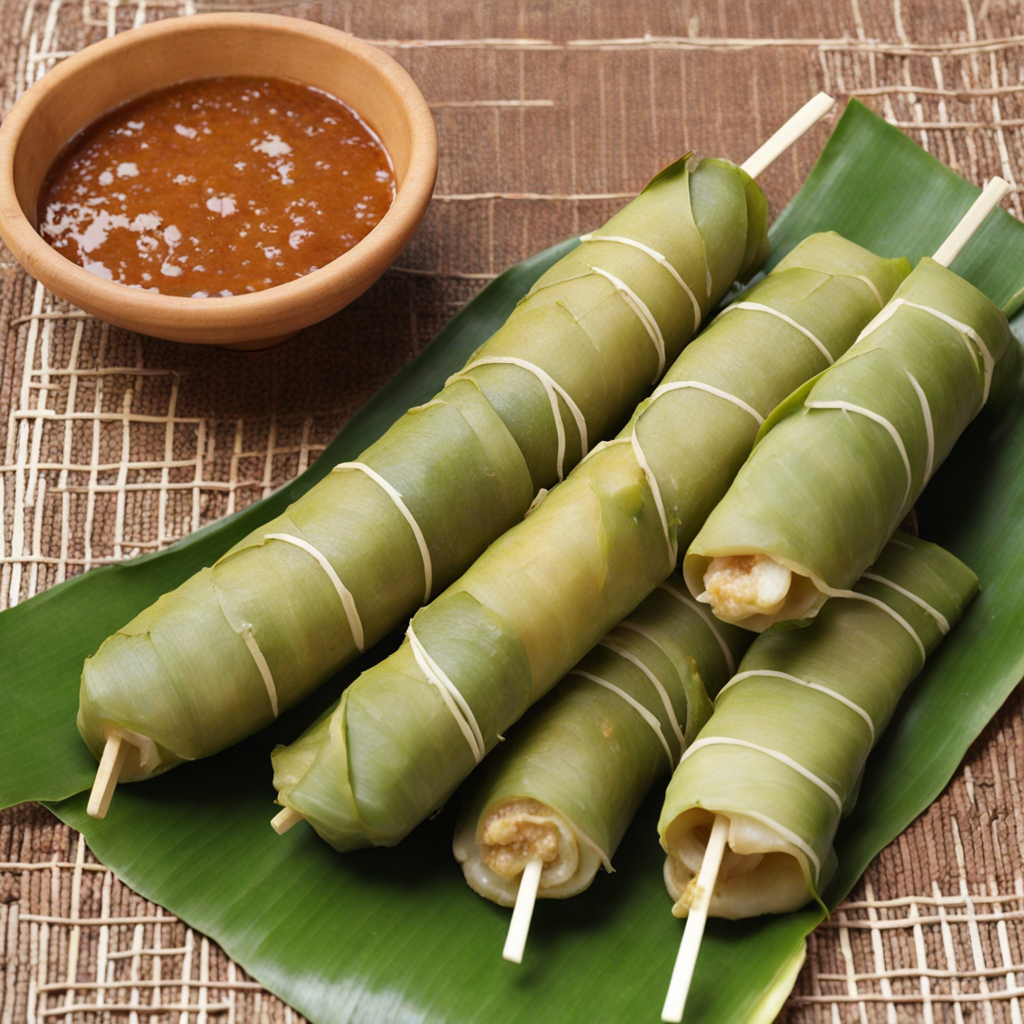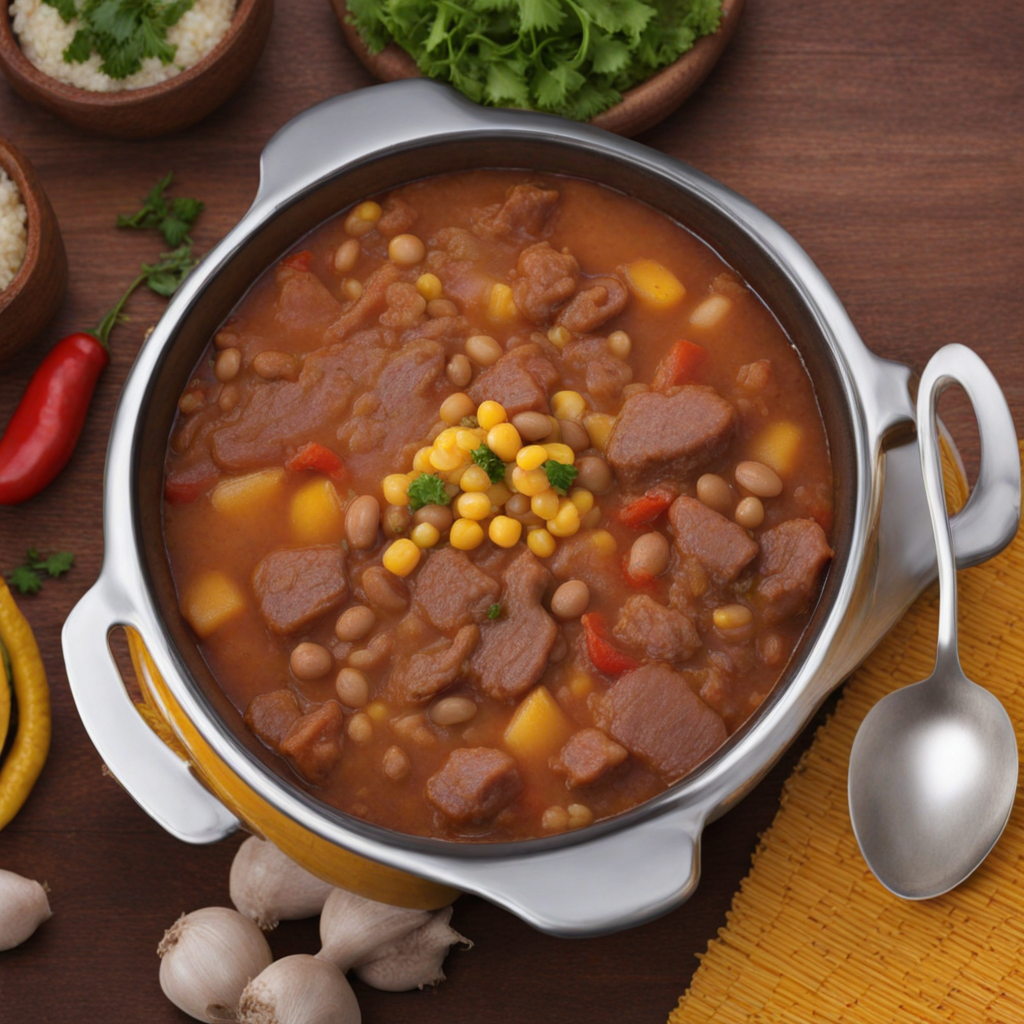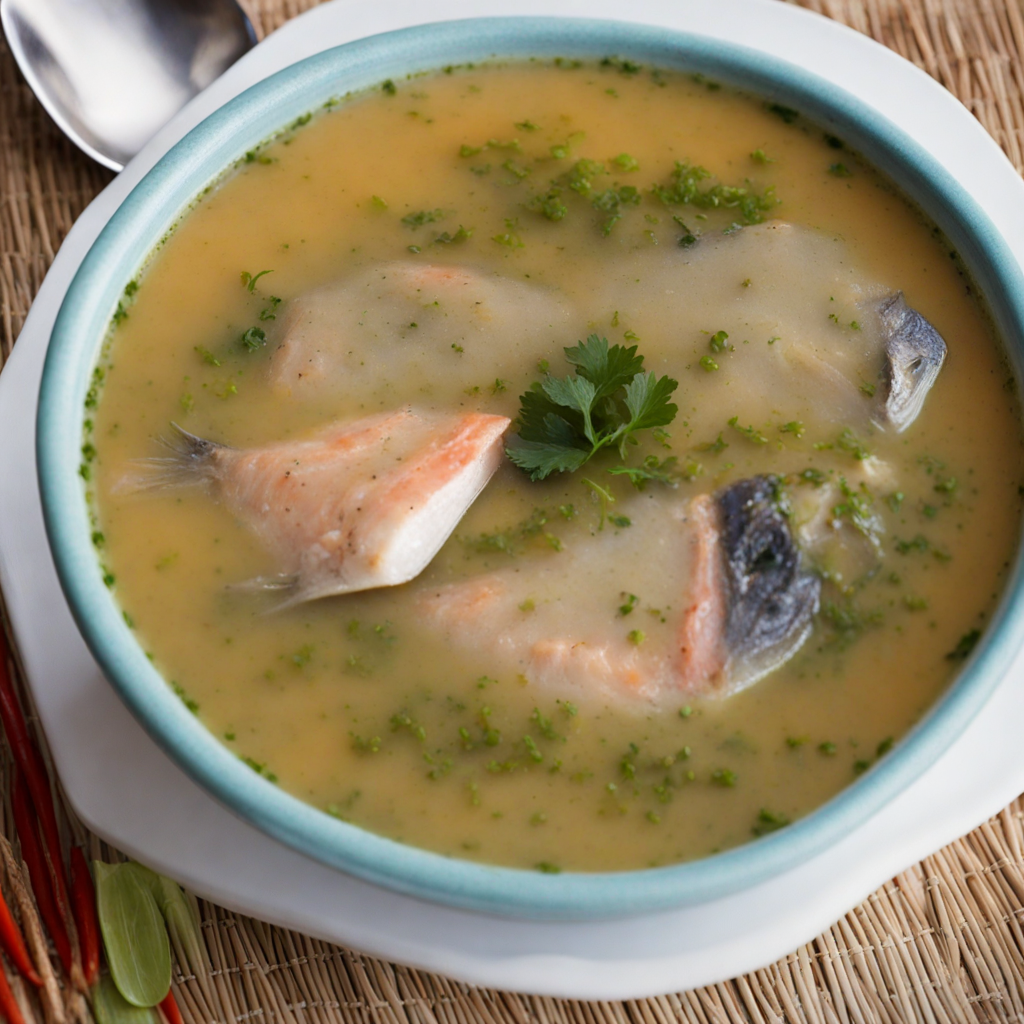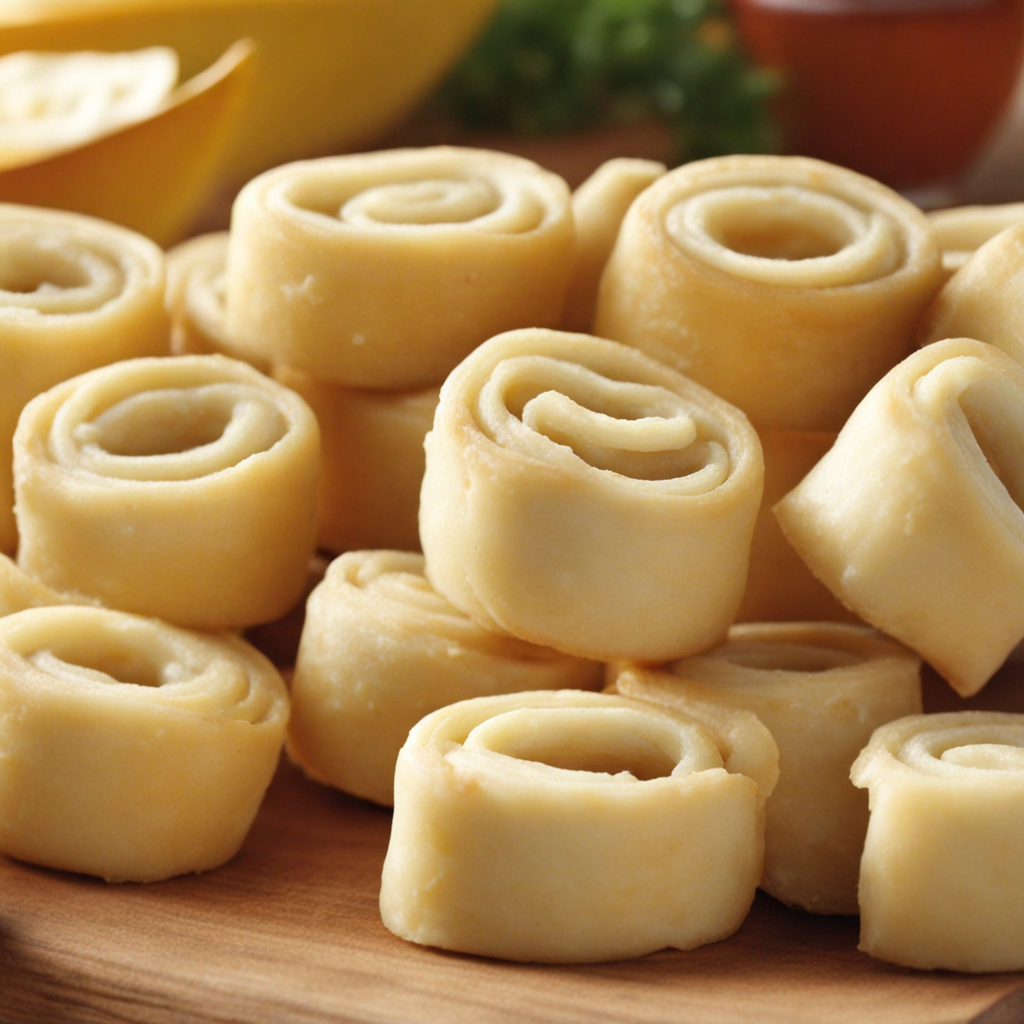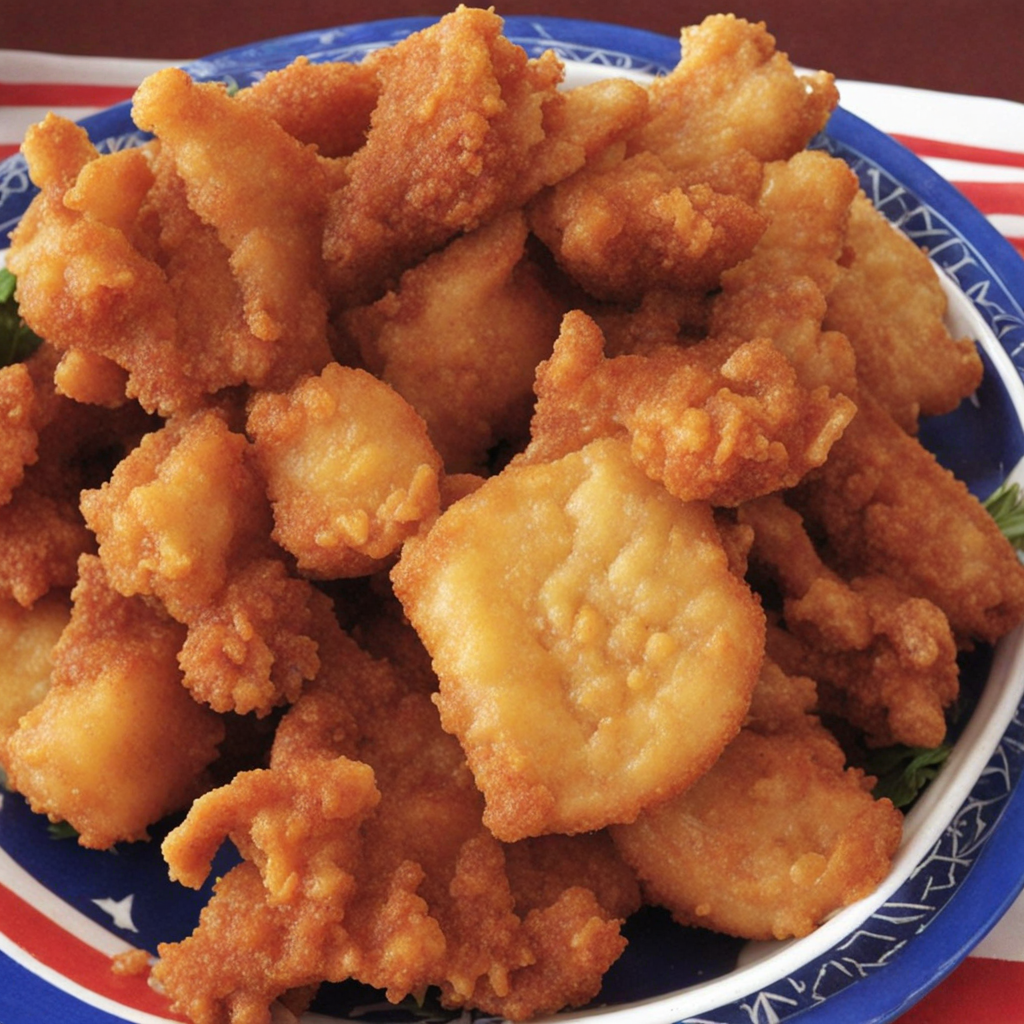Chipa Caburé
Chipa Caburé is a delightful cheese bread that originates from Paraguay, showcasing the rich culinary traditions of the Guarani people. This traditional snack is made primarily from a blend of cassava flour and cheese, giving it a unique texture that is both chewy and slightly crumbly. The use of local cheeses, often a combination of fresh and aged varieties, adds a distinct flavor profile that is savory and rich, making each bite an indulgence. The dough is typically flavored with additional ingredients such as eggs, milk, and sometimes a hint of herbs, which enhance its flavor and aroma, making it a beloved treat across the country. The preparation of Chipa Caburé is a labor of love, often crafted by hand in homes and kitchens throughout Paraguay. The dough is shaped into small, round forms and baked until golden brown, resulting in a satisfying crust that encases the soft, gooey cheese within. The bread is best enjoyed warm, fresh out of the oven, allowing the cheese to stretch and ooze with every bite. Its versatility allows it to be served as a snack, breakfast item, or even as an accompaniment to meals, making it a staple in Paraguayan households. Chipa Caburé not only tantalizes the taste buds but also carries a deeper cultural significance. It is often enjoyed during festive occasions and gatherings, bringing people together over its comforting flavors. The experience of sharing this delicious bread with family and friends enhances its appeal, as it embodies the spirit of hospitality that is deeply rooted in Paraguayan culture. For those looking to explore new culinary delights, Chipa Caburé offers a taste of Paraguay that is both unique and unforgettable.
How It Became This Dish
Chipa Caburé: A Culinary Jewel of Paraguay Origins and Ingredients Chipa Caburé, a quintessential Paraguayan delicacy, has its roots deeply embedded in the culinary traditions of the Guarani people, the indigenous inhabitants of Paraguay. This traditional cheese bread, characterized by its distinctive shape resembling a bird, is made primarily from cassava flour, cheese, eggs, and milk. The incorporation of cassava, or manioc, reflects the agricultural practices of the Guarani, who have cultivated this starchy root for centuries. The use of local ingredients not only highlights Paraguay's rich biodiversity but also showcases the resourcefulness of its early inhabitants. The word "chipa" itself comes from the Guarani language, meaning "to bake," and is indicative of the many variations of this dish that exist throughout Paraguay and neighboring countries. While "Chipa" generally refers to a range of baked goods made with cassava flour, “Chipa Caburé” specifically denotes a unique type often associated with the eastern regions of Paraguay, particularly in the departments of Itapúa and Alto Paraná. Cultural Significance Chipa Caburé is more than just a food item; it is a cultural emblem that signifies community, tradition, and identity. In Paraguay, culinary practices are deeply intertwined with social customs, and Chipa Caburé is often prepared during significant celebrations, particularly during Holy Week (Semana Santa). Families come together to make this delightful treat, often involving children in the preparation process, thus passing down recipes and cooking techniques through generations. The dish is not only served on special occasions but is also a staple in the everyday diet of many Paraguayans. It is commonly enjoyed as a breakfast item or snack, often accompanied by yerba mate, Paraguay's national drink. This combination reflects the Paraguayan way of life, where communal meals and shared experiences are valued. The preparation and consumption of Chipa Caburé foster a sense of belonging, reinforcing family ties and cultural heritage. Development Over Time Historically, the preparation of Chipa Caburé has evolved, influenced by various factors including colonization, migration, and globalization. The introduction of European ingredients, particularly cheese, during the Spanish colonization of the Americas, altered the traditional Guarani recipes. This fusion of indigenous and European culinary practices led to the creation of numerous variations of Chipa, with Chipa Caburé standing out for its unique preparation and presentation. In the early 20th century, as Paraguay underwent socio-economic changes, the production of Chipa Caburé began to transition from a home-cooked dish to a commercially available product. Street vendors and local bakeries started to offer Chipa Caburé, making it accessible to a wider audience. This shift marked a significant change in the consumption patterns of the dish, as it became a popular snack for both locals and visitors. The globalization of food culture has also impacted Chipa Caburé, as it has found its way into the culinary scene beyond Paraguay's borders. With the increased interest in Latin American cuisine globally, Chipa Caburé has gained recognition in gourmet restaurants and food festivals, showcasing its versatility and appeal. Chefs often experiment with the traditional recipe, incorporating modern techniques and flavors, which has sparked a renewed interest in this age-old dish. Chipa Caburé Today In contemporary Paraguay, Chipa Caburé continues to thrive as a beloved culinary staple, reflecting both its historical roots and modern adaptations. It is often enjoyed fresh from the oven, with its crispy exterior and soft, cheesy interior offering a delightful contrast in texture. The flavors are rich and savory, with the cheese providing a creamy depth that balances the nuttiness of the cassava flour. Variations of Chipa Caburé abound, with some recipes incorporating herbs, spices, or even sweet ingredients, illustrating the creativity of Paraguayan cooks. Traditional bakers often use a special wooden mold to shape the bread, imparting a rustic charm and a sense of authenticity to the final product. Festivals celebrating Chipa Caburé have also emerged, highlighting not only the dish itself but the communal spirit surrounding its preparation and enjoyment. Moreover, the dish serves as a symbol of resilience and cultural pride for Paraguayans. In a world where globalization often threatens local culinary traditions, Chipa Caburé remains a testament to the enduring legacy of the Guarani people and their contributions to Paraguay’s national identity. The act of making this dish is a celebration of heritage, a reminder of the land's bounty, and a connection to the ancestors who first cultivated the ingredients that make it so special. Conclusion Chipa Caburé is a rich tapestry of history, culture, and flavor that encapsulates the essence of Paraguay. From its origins with the Guarani people to its modern-day iterations, this beloved dish reflects the journey of a nation and its people. As Paraguay continues to evolve, Chipa Caburé stands firm as a culinary emblem of tradition and community, inviting both locals and visitors to partake in a shared experience that transcends generations. Through its preparation and consumption, Chipa Caburé fosters unity, celebrates cultural heritage, and offers a delicious taste of Paraguay's rich culinary landscape.
You may like
Discover local flavors from Paraguay


